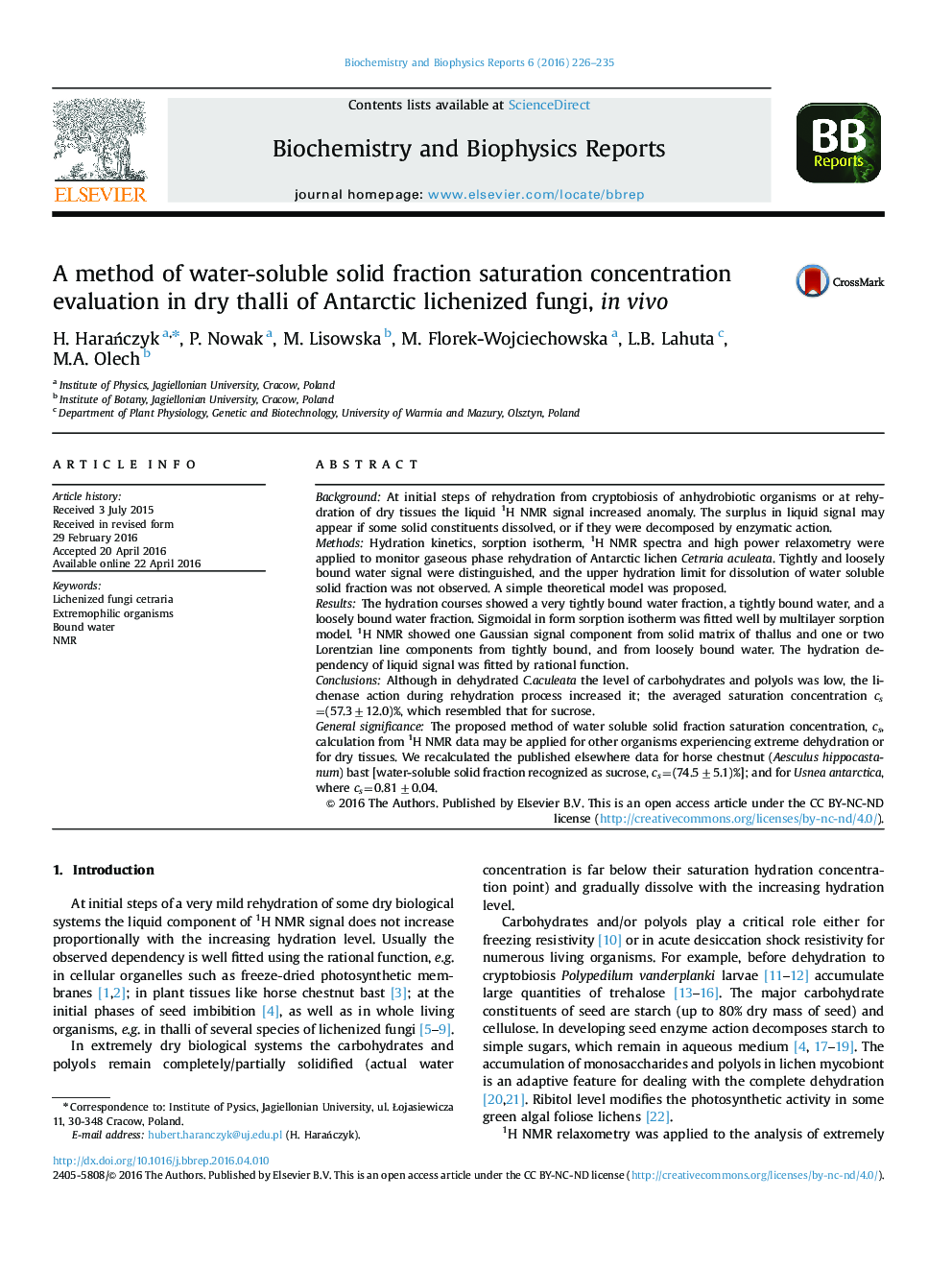| کد مقاله | کد نشریه | سال انتشار | مقاله انگلیسی | نسخه تمام متن |
|---|---|---|---|---|
| 1941685 | 1536902 | 2016 | 10 صفحه PDF | دانلود رایگان |

• Hydration kinetics show three fractions of bound water in lichen thallus.
• Sorption isotherm yields water fraction saturating primary water binding sites.
• 1H NMR spectra distinguish solid thallus and mobile and immobilized water fractions.
• Signal intensities supply saturation concentration, cs, of water-soluble solid fraction.
• A simple theoretical model is proposed and applied also to already published NMR data.
BackgroundAt initial steps of rehydration from cryptobiosis of anhydrobiotic organisms or at rehydration of dry tissues the liquid 1H NMR signal increased anomaly. The surplus in liquid signal may appear if some solid constituents dissolved, or if they were decomposed by enzymatic action.MethodsHydration kinetics, sorption isotherm, 1H NMR spectra and high power relaxometry were applied to monitor gaseous phase rehydration of Antarctic lichen Cetraria aculeata. Tightly and loosely bound water signal were distinguished, and the upper hydration limit for dissolution of water soluble solid fraction was not observed. A simple theoretical model was proposed.ResultsThe hydration courses showed a very tightly bound water fraction, a tightly bound water, and a loosely bound water fraction. Sigmoidal in form sorption isotherm was fitted well by multilayer sorption model. 1H NMR showed one Gaussian signal component from solid matrix of thallus and one or two Lorentzian line components from tightly bound, and from loosely bound water. The hydration dependency of liquid signal was fitted by rational function.ConclusionsAlthough in dehydrated C.aculeata the level of carbohydrates and polyols was low, the lichenase action during rehydration process increased it; the averaged saturation concentration cs=(57.3±12.0)%, which resembled that for sucrose.General significanceThe proposed method of water soluble solid fraction saturation concentration, cs, calculation from 1H NMR data may be applied for other organisms experiencing extreme dehydration or for dry tissues. We recalculated the published elsewhere data for horse chestnut (Aesculus hippocastanum) bast [water-soluble solid fraction recognized as sucrose, cs=(74.5±5.1)%]; and for Usnea antarctica, where cs=0.81±0.04.
The combined fit of liquid to solid component of 1H NMR signal, L/S, and respective fit of immobilized water signal to total liquid signal, L1/L, expressed as a sample hydration level, Δm/m0, allows to get saturation concentration of water-soluble solid fraction, cs, in extremely dry biological system (cryptobiotic organism, in vivo).Figure optionsDownload as PowerPoint slide
Journal: Biochemistry and Biophysics Reports - Volume 6, July 2016, Pages 226–235